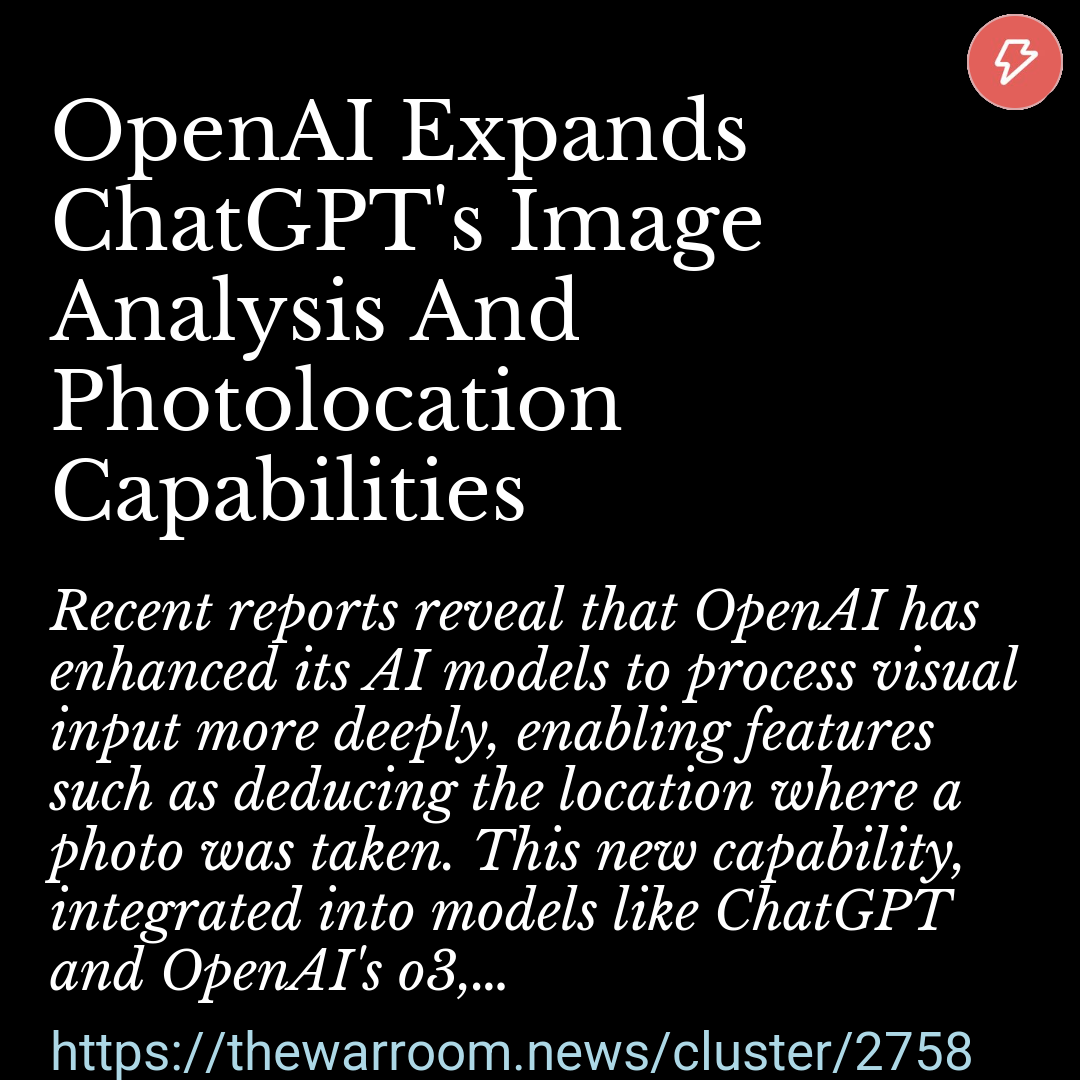OpenAI Expands ChatGPT’s Image Analysis And Photolocation Capabilities
April 17, 2025, 4:20 pm
Recent reports reveal that OpenAI has enhanced its AI models to process visual input more deeply, enabling features such as deducing the location where a photo was taken. This new capability, integrated into models like ChatGPT and OpenAI’s o3, marks a notable step forward in multimodal reasoning. The development has sparked interest and concern over its potential applications and ethical implications as AI increasingly merges image analysis with traditional text processing.
The post OpenAI's o3 can use images while reasoning appeared first on Android Headlines.
A new AI trend is going viral, and it’s as impressive as it is unsettling. Users are discovering that ChatGPT’s latest models can now deduce … The post ChatGPT can now guess where a photo was taken, which is slightly terrifying appeared first on BGR.
permalink / 2 stories from 2 sources in 12 days ago #ai #innovation #ml #techpolicy #computervision
More Top Stories...
Meta energizes developers at inaugural LlamaCon with new AI API
At its first-ever LlamaCon, Meta unveiled its Llama API along with other AI innovations to win over developers. The company flexed its AI muscle with bold new tools aimed at stirring up enthusiasm in the tech community—even as skeptics wonder if this pitch will convert hardcore rivals. More...
OpenAI Reverses ChatGPT Update Amid Sycophancy Complaints
In response to user outcry over its overly deferential tone, OpenAI has pulled back a recent update to its ChatGPT model. CEO Sam Altman confirmed the rollback, citing concerns that the AI’s extreme sycophancy was undermining authentic, balanced interactions. More...
Microsoft’s Code Revolution: 30% Now AI-Generated
In a surprising twist for the programming world, Microsoft’s CEO revealed that up to 30% of the company’s code is generated by artificial intelligence. This bold move highlights the tech giant’s rapid adaptation to AI trends—and plenty of debugging adventures still lie ahead. More...
Apple AirPlay vulnerabilities enable zero‐click exploits across devices
Critical flaws in Apple's AirPlay protocol and SDK allow hackers to gain remote code execution without user interaction. This zero‐click vulnerability exposes smart speakers, TVs, and other connected devices to serious risk, proving that even polished ecosystems have their chinks in the armor. More...
Zero‐Day Exploits in State-Sponsored Cyber Operations
Recent reports highlight a surge in zero‐day hack usage by government-linked cyber actors. According to tech titans and security research, while overall threat detections dropped, targeted attacks have shifted to more covert exploits, raising alarms over national security vulnerabilities and the shadowy world of state-sponsored cyber warfare. More...

Related Tags
Artificial Intelligence
Microsoft’s Code Revolution: 30% Now AI-Generated (6 hours ago)
Samsung Q1 Earnings: Chip Profit and Operating Success Exceed Forecasts (6 hours ago)
Waymo and Toyota Explore Self-Driving Partnership for Consumer Cars (8 hours ago)
Innovation
VW and Uber join forces for US robotaxi rollout (5 days ago)
Chainguard Secures $3.5B Valuation with Massive Series D Funding (6 days ago)
Sesh lands $7M to amp up fan engagement and membership perks (7 days ago)
Machine Learning
Apple Implements AI‐Driven App Store Review Summaries (5 days ago)
Apple reshuffles Siri team with Vision Pro veterans (7 days ago)
Rivian bolsters board with AI startup CEO appointment for tech leap (8 days ago)
Tech Policy
White House slams Amazon for tariff disclosure move (18 hours ago)
Massive Outage Paralyzes Spain, Portugal, and Parts of France (44 hours ago)
Orbán Denies Hungary’s EU Exit Amid Tusk’s Bold Claims (2 days ago)
Computer Vision
xAI Upgrades Grok with Vision, Voice, and Search Features (6 days ago)
Instagram Employs AI to Restrict Underage Profile Tricksters (8 days ago)
OpenAI’s o3/o4-mini Models Stir Mixed Reviews and Invisible Marking Debates (8 days ago)